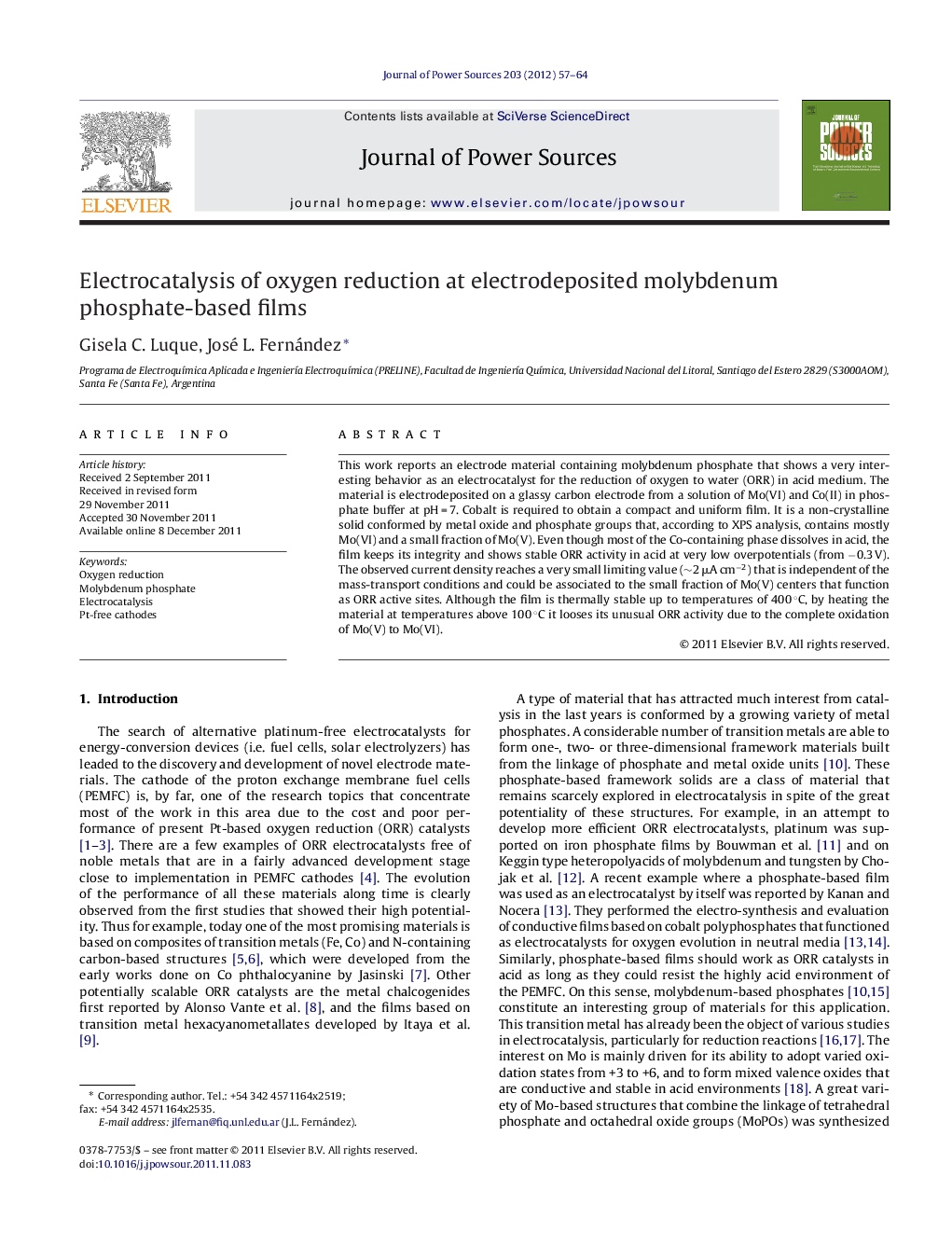| Article ID | Journal | Published Year | Pages | File Type |
|---|---|---|---|---|
| 1288332 | Journal of Power Sources | 2012 | 8 Pages |
This work reports an electrode material containing molybdenum phosphate that shows a very interesting behavior as an electrocatalyst for the reduction of oxygen to water (ORR) in acid medium. The material is electrodeposited on a glassy carbon electrode from a solution of Mo(VI) and Co(II) in phosphate buffer at pH = 7. Cobalt is required to obtain a compact and uniform film. It is a non-crystalline solid conformed by metal oxide and phosphate groups that, according to XPS analysis, contains mostly Mo(VI) and a small fraction of Mo(V). Even though most of the Co-containing phase dissolves in acid, the film keeps its integrity and shows stable ORR activity in acid at very low overpotentials (from −0.3 V). The observed current density reaches a very small limiting value (∼2 μA cm−2) that is independent of the mass-transport conditions and could be associated to the small fraction of Mo(V) centers that function as ORR active sites. Although the film is thermally stable up to temperatures of 400 °C, by heating the material at temperatures above 100 °C it looses its unusual ORR activity due to the complete oxidation of Mo(V) to Mo(VI).
► Molybdenum-phosphate based films are fabricated by electrodeposition. ► The films contain a small fraction of Mo(V). ► They are stable in acid media. ► They are active for the electro-reduction of oxygen to water. ► The Mo(V)-containing phase reduces oxygen at very low overpotentials.
